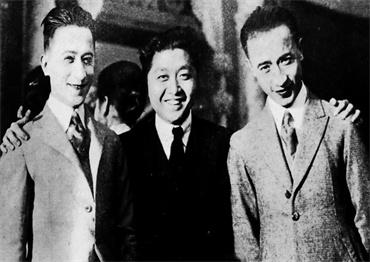Since reform and opening-up in the 1980s, SAFS, like all Statebacked film studios, underwent a rocky transition. As government funding gradually dried up, film studios had to face the market and take full responsibility for their losses.
Su Da, the current director of SAFS, told NewsChina the entire Chinese film industry had taken a downturn. “In the past, whatever we made, the government would buy the copyright at a price above cost. Therefore, most creators at SAFS were artists devoted to making quality works with high artistic value. But when the industry was suddenly pushed into the market, to be honest, many creators had difficulty adjusting,” Su said.
The past glory of SAFS resulted from “State intervention,” Su said. “The State gathered leading artists and provided them with funding to make projects. Surely it wouldn’t be difficult to produce quality works,” Su added.
As China’s market reforms deepened, American and Japanese animation powerhouses hit the Chinese market. Tezuka Osamu, who began his animation career inspired by Princess Iron Fan, returned the favor with Astro Boy. A body of American and Japanese animated series followed, such as Popeye (1960), Smurfs (1981), Mickey Mouse and Donald Duck (1986), Teenage Mutant Ninja Turtles (1987), Ikkyu the Little Monk (1975), Doraemon (1979) and Slam Dunk (1993). Foreign animation quickly dominated the market, and local studios struggled to compete.
In 1990, Chen Liaoyu was among the eight students admitted to the Beijing Film Academy (BFA) department of animation. Only BFA offered an animation course, and its department conducted admissions once every six years. He told NewsChina that the only option for many young artists was attending college. However, since colleges rarely opened enrolment, most worked for animation outsourcing companies after high school.
The deluge of foreign animation begat a wave of outsourcing studios, mostly in the southeastern coastal cities of Shenzhen, Zhuhai and Guangzhou in Guangdong Province. They recruited many Chinese animators for relatively low-skilled works such as inking, coloring and background design for clients in Japan and the US.
Chinese animators worked hard and learned fast, earning them spots as key animators. Companies began to poach more experienced and talented Chinese animators with higher salaries.
Su Da said that during the 1990s, animators at SAFS only earned a few hundred yuan a month, and outsourcing companies would pay tenfold. Many young animators chose higher salaries instead of venturing on original projects for low returns.
As a result, China became the world’s biggest animation factory. Many well-known Japanese animation works, such as Detective Conan, Inuyasha, Naruto and Mushishi, which were extremely popular in China, involved Chinese animators at outsourcing companies.
According to statistics from the Institute of Journalism at the Chinese Academy of Social Sciences, in 1991, 66.7 percent of the animation that aired in Beijing was imported, half of which was from Disney. During 2002 and 2003, Japanese animation was the most popular among Chinese youth, followed by American animation.
For most of the 1990s and 2000s, domestic animation was poorly made and derivative. Only one domestic series – Lotus Lantern (1999) – was a hit with Chinese audiences. It was SAFS’s first commercial blockbuster. Pleasant Goat and Big Big Wolf (2005), an animated series aimed at young children, was the only successful domestic cartoon show of the decade.
“Sadly, the developmental road of the Chinese School was cut off, whereas animation in many other countries kept developing,” Chen Liaoyu told NewsChina.
Chinese animation, once considered a powerhouse of creativity and innovation, gradually fell behind American, European and Japanese productions in the 1990s. For a long time, Chinese animators struggled to regain the confidence and identity of the past. But they would redraw these lines in the 2010s, and pick up where the Wan Brothers left off.

 Old Version
Old Version










